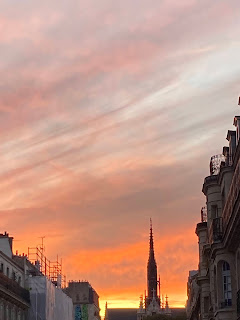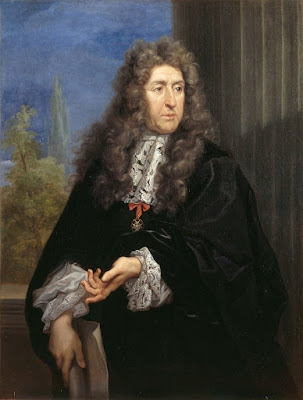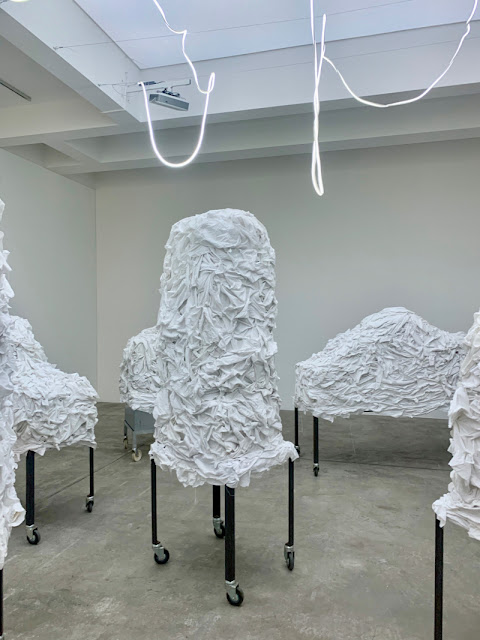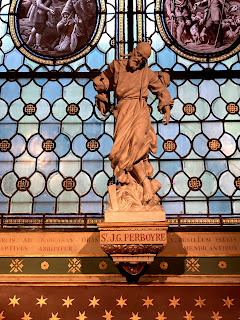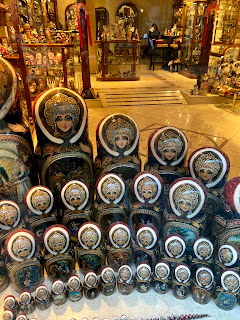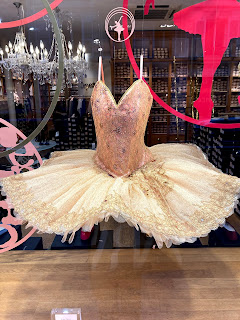Where I live in Paris is the cheapest area for housing in the city. It’s not difficult to see why. Only between the hours of two and five at night does the street take a rest - no traffic except for the occasional taxi, no life except the rats scuttling round the empty bins, no noise except the far-off wail of an ambulance heading for the hospital on the boulevard. The bin lorries have cleared the daily mounds of rubbish and for a few hours the street is clean.
But by the time the sky begins to lighten again the first shop blinds are already up and the delivery vans are unloading. Sheets of cardboard and upturned boxes are laid out on the pavements near the crossroads, to be filled with belts, wallets, shoes and jeans for sale. By midday the cigarette sellers are back on their pitches alongside the men selling lentils, dumplings and pancakes in foil trays, roasted corn or peanuts, herbs and fresh fruit. By early evening the crowds are so dense that if you’re in a hurry it’s simpler to step off the pavement and walk along the street itself. The wide boulevards and stone monuments, the parks and the further-out havens of bourgeois tranquillity seem as remote and unreal as the Pacific islands.
On a map of the city the quartier is a narrow triangle, a tangle of railway lines, bridges, streets and squares squeezed between the gare de l’Est and the gare du Nord. It is home to some of the city’s poorest, most ethnically diverse populations. Poverty means beggars and we have plenty of those. Poverty is why so much business is done in a hustle on the street and why so many have to find a space to eat their only hot meal of the day out of a foil tray. Poverty doesn’t have to mean an oppressive police presence but here it usually does. On the plus sides, and there are several, like most poor districts in a rich city, there’s a vitality that you never find in the quartiers huppés like the 7th or 16th arrondissements: tiny jardins ephémères, hens clucking behind a fence on a patch of waste ground by the boulevard Barbès, piles of ginger, plantain, okra, renewed every day in steep pyramids outside the food shops, bolts of bright fabric stacked to the roof in the sweatshops along the back streets. But you see the strain too: the worn grass in the too few parks, the graffiti and the general shabbiness, the tired faces and broken bodies.
I have often written about the refugees and migrants who continue to congregate in this part of town and what some of the more fortunate, or the less precarious, do to help them, with food, shelter and advice. Against at times enormous odds the volunteers in the p’tits dejs solidaires have continued to keep the breakfasts going without a break. For months this year, while I was in Scotland, the collectif was forced to abandon its established site in the cour du Maroc and go back to serving the breakfasts on the street. The reason for this? A punitive and misguided campaign against the down-and-outs and drug addicts which resulted in the mairie of the 18th arrondissement keeping the gates into the park locked until 10 a.m. Try spending a night in a sleeping bag on the street and then stand in a queue to get a sandwich and a warm drink on a stretch of narrow pavement…
It takes real determination, real conviction, to keep going in the face of the indifference of the politicians and the casual hostility of the police but to manage to do more than simply ‘keep going’ is little short of miraculous. However, that is what happened this spring. The first issue of La Distrib, the magazine of the collectif, came out in May.
Now issue no.2 is taking shape to be ready for distribution in early December. There are plans to put a link on the p’tits dejs Facebook site to make it available it to a wider readership. It brings together words and images by migrants and asylum-seekers, volunteers and local shop-keepers.
Which brings me by a round-about route to the huge exhibition currently running in the Musée d’Art Moderne on the work and thinking of artists and teachers, Anni and Josef Albers, who first met in the Bauhaus in the heyday of that institution.
It is among the best exhibitions I have seen in a very long time - on until 9th January.
'We investigate and worry and analyse and forget that the new comes about through exuberance not through a defined deficiency. Out of the chaos of collapse we can save the lasting...’ Anni Albers.
La Distrib is both a record and a celebration of that spirit and a tool to broadcast it more widely.

